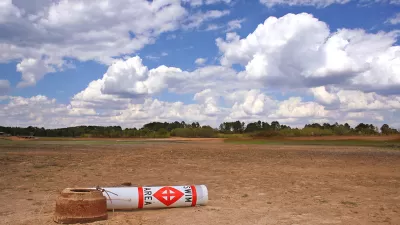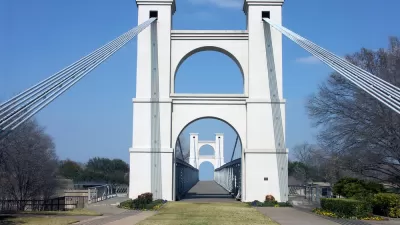Your morning cup of joe - all things considered - takes 140 liters of water to make. A new study reveals the true cost in water usage for crops and cultures.
"As world water availability begins to decline as the result of population growth, overconsumption, and climate change, more water advocates are encouraging governments and consumers to internalize the true cost of water through an account of their water footprint.
The global water footprint is about 7.5 trillion cubic meters per year, not including irrigation losses, according to estimates [PDF] by Dutch researchers and the United Nations Educational Scientific and Cultural Organization (UNESCO). India, with 17 percent of the global population, has the largest water footprint in absolute terms. But its footprint represents only 13 percent of the world total. The United States, in comparison, comprises 4.5 percent of the world population and consumes 9 percent of the world's water.
Agriculture has the greatest impact on a water footprint. Global crop production requires more than 6 trillion cubic meters of water each year, with nearly a quarter of supplies flowing to rice paddies. Livestock production requires the most water resources in the food chain. One hamburger, for instance, needs 2,400 liters of water on average."
FULL STORY: Water Footprints Make a Splash

Planetizen Federal Action Tracker
A weekly monitor of how Trump’s orders and actions are impacting planners and planning in America.

San Francisco's School District Spent $105M To Build Affordable Housing for Teachers — And That's Just the Beginning
SFUSD joins a growing list of school districts using their land holdings to address housing affordability challenges faced by their own employees.

The Tiny, Adorable $7,000 Car Turning Japan Onto EVs
The single seat Mibot charges from a regular plug as quickly as an iPad, and is about half the price of an average EV.

Seattle's Plan for Adopting Driverless Cars
Equity, safety, accessibility and affordability are front of mind as the city prepares for robotaxis and other autonomous vehicles.

As Trump Phases Out FEMA, Is It Time to Flee the Floodplains?
With less federal funding available for disaster relief efforts, the need to relocate at-risk communities is more urgent than ever.

With Protected Lanes, 460% More People Commute by Bike
For those needing more ammo, more data proving what we already knew is here.
Urban Design for Planners 1: Software Tools
This six-course series explores essential urban design concepts using open source software and equips planners with the tools they need to participate fully in the urban design process.
Planning for Universal Design
Learn the tools for implementing Universal Design in planning regulations.
Smith Gee Studio
City of Charlotte
City of Camden Redevelopment Agency
City of Astoria
Transportation Research & Education Center (TREC) at Portland State University
US High Speed Rail Association
City of Camden Redevelopment Agency
Municipality of Princeton (NJ)





























